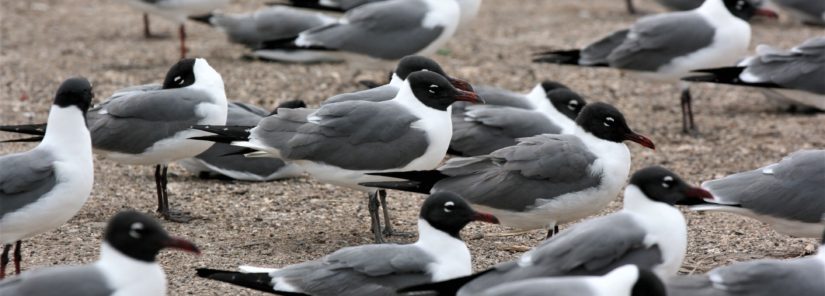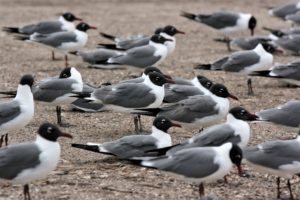
Managing Gulls to Mitigate Nuisance, Health, and Safety Risks


Managing Gulls to Mitigate Nuisance, Health, and Safety Risks
There are at least 55 species of gulls (often incorrectly referred to as seagulls) worldwide. Ten different genera of gulls are currently recognized. They occur on every continent and are often associated with coastal locations. However, many are found far inland and in upland habitats far from the coasts. Over 28 species of gulls have been identified in North America and they range from the southern borders to the Alaskan and Canadian Arctic regions. Several species specialize on limited food sources, but almost all are generalist omnivores that feed on a huge variety of forage and are therefore highly adaptable and tolerant of human activity. Everyone is familiar with these birds as they are abundant along our coastlines, on lakes, rivers, parks, and other natural areas. They are also very common in developed areas including cities, suburbs, on golf courses, landfills, and other such areas. As a consequence of their ubiquitous presence, high overall populations, and adaptive nature, they often come into conflict with human interests and may cause health and safety issues where they occur. Nesting and roosting on buildings, in parking lots, parks, and other areas can be messy affairs with droppings and food wastes causing nuisances and potential health risks. Feeding on crops, food processing facilities, waste management areas, and others pose similar issues. Huge populations are often attracted to landfills where they cause damage to equipment with corrosive droppings and pose potential health risks as vectors of several pathogens. Safety concerns are also problematic especially when these birds occupy airports where bird strikes to aircraft can cause severe economic, human injury, and other hazards. Worldwide, gulls have been responsible for more damaging bird strike incidents with aircraft than almost any other group of birds. Active management of populations is thus often necessary to mitigate these problems.
Gulls can be managed to reduce local populations or dispersed from areas where they are not welcomed. Habitat management is primary in reducing impacts by making specific areas as unattractive as possible to feeding, breeding, loafing, and roosting gulls. But even in managed areas, these highly adaptable birds may still occur and require more active management. Virtually all gull species have highly specific distress and alarm calls that may be used to dissuade them from localized areas. Bird Gard™ Pro, Super Pro, and Mobile Bird Gard™ are the best devices available for broadcasting distress calls. Judicious broadcasts of distress calls should be used if proper methods are followed to avoid habituation problems with overuse or improper timing and locations of these bioacoustic techniques. These calls are highly recommended to supplement other methods. The most effective means of reducing local presence of gulls can be achieved through proper application of pyrotechnics that produce a variety of sounds, flashes, and trailing smoke. Reed-Joseph provides a wide variety of pyrotechnic devices, launchers, and safety equipment that should form the basis of any effective gull management program. Facilities such as landfills and airports have reported 90% or better reductions of gull presence through the proper use of pyrotechnic devices. Propane canons can also be effective to supplement pyrotechnics if they are only used when birds are actively present and not placed on random schedules. Remotely triggered devices are best, and integrated systems such as the Scare Wars® system can be highly effective when combined with other management techniques. Gulls are relatively long-lived species and will learn over time to avoid locations where they are routinely and effectively harassed. Properly administered, integrated gull management systems can provide ecologically friendly and biologically sound programs to mitigate potential nuisance, human health, and safety issues with these familiar birds.







